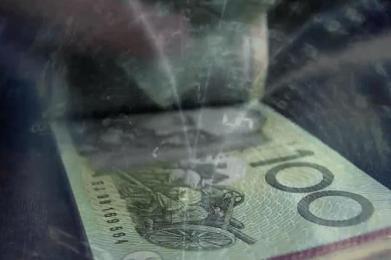What is forex?
Forex (FX) is a portmanteau of foreign currency and exchange. Foreign exchange is the process of changing one currency into another for a variety of reasons, usually for commerce, trading, or tourism.
A lot of forex trading takes place between major banks and financial institutions, which buy and sell massive amounts of currency every single day. For individual traders who don’t have the means to make billion-dollar forex trades, though, there are two main ways to get involved: forex CFDs or trading forex via a broker.
What is a forex CFD?
A forex CFD is a contract in which you agree to exchange the difference in price of a currency pair from when you open your position to when you close it. Open a long position, and if the forex position increases in price you’ll make a profit. If it drops in price, you’ll make a loss. Open a short position, and the opposite is true.
Forex is just one of the markets you can trade using CFDs.

Forex trading via a broker
Forex trading via a broker – or sometimes via a bank – works in a broadly similar way to CFD trading. You’re speculating on the price movements of currency pairs, without actually taking ownership of the currencies themselves. If you think a currency pair’s price is headed down, you can go short instead of long.
When you trade forex via a broker, though, you won’t have access to other markets.
Learn how the forex market works
One of the first things to learn when you want to trade currencies is how the forex market operates, which is very different to exchange-based systems such as shares or futures.
Instead of buying and selling currencies on a centralised exchange, forex is bought and sold via a network of banks. This is called an over-the-counter, or OTC market. It works because those banks act as market makers – offering a bid price to buy a particular currency pair, and a quote price to sell a forex pair.
Trading via forex providers
Most retail traders won’t buy and sell forex directly with one of the major banks – they’ll use a forex trading provider. Forex trading providers deal with the banks on your behalf, finding the best available prices and adding on their own market spread.
Some providers will allow you to interact directly with market makers’ order books. This is called direct market access, or DMA, and means advanced traders can buy and sell forex without the spread – instead trading at the prices offered by currency providers, plus a variable commission.
Open an account
If you want to trade forex via CFDs, you’ll need an account with a leveraged trading provider.
Build a trading plan
Building a trading plan is particularly important if you’re new to the markets. A trading plan helps take the emotion out of your decision making, as well as providing some structure for when you open and close your positions. You might also want to consider employing a forex trading strategy, which governs how you find opportunity in the market.
Once you have chosen a particular forex trading strategy, it’s time to apply it. Use your favoured technical analysis tools on the markets you want to trade and decide what your first trade should be.
Even if you want to be a purely technical trader, you should also pay attention to any developments that look likely to cause volatility.
Upcoming economic announcements, for instance, might well reverberate across the forex markets – something your technical analysis might not consider.
Choose your forex trading platform
Our trading platforms can provide you with a smart and faster way to trade forex.
Your web browser
One of our mobile apps
Advanced third-party platforms like MT4
Each of our forex trading platforms can be personalised to suit your trading style and preferences, with personalised alerts, interactive charts and risk management tools.
Open, monitor and close your first position
Once you have chosen your platform, you can start trading. Just open the deal ticket for your chosen market, and you’ll see both a buy and a sell price listed. You’ll also be able to decide the size of your position and add any stops or limits that will close your trade once it hits a certain level. Hit buy to open a long position or sell to open a short position.
You can monitor the profit/loss of your position in the ‘open positions’ section of the dealing platform.
Once you’ve decided it’s time to close your position, just make the opposite trade to when you opened it.
